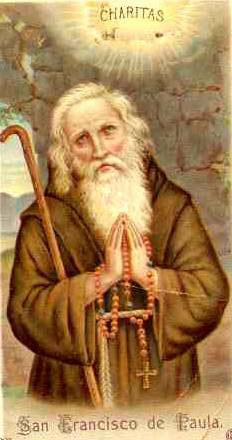 Dear readers, Catholic Online was de-platformed by Shopify for our pro-life beliefs. They shut down our Catholic Online, Catholic Online School, Prayer Candles, and Catholic Online Learning Resources essential faith tools serving over 1.4 million students and millions of families worldwide. Our founders, now in their 70's, just gave their entire life savings to protect this mission. But fewer than 2% of readers donate. If everyone gave just $5, the cost of a coffee, we could rebuild stronger and keep Catholic education free for all. Stand with us in faith. Thank you. Help Now >
Dear readers, Catholic Online was de-platformed by Shopify for our pro-life beliefs. They shut down our Catholic Online, Catholic Online School, Prayer Candles, and Catholic Online Learning Resources essential faith tools serving over 1.4 million students and millions of families worldwide. Our founders, now in their 70's, just gave their entire life savings to protect this mission. But fewer than 2% of readers donate. If everyone gave just $5, the cost of a coffee, we could rebuild stronger and keep Catholic education free for all. Stand with us in faith. Thank you. Help Now >
St. Mary of Egypt
FREE Catholic Classes
Born probably about 344; died about 421. At the early age of twelve Mary left her home and came to Alexandria, where for upwards of seventeen years she led a life of public prostitution. At the end of that time, on the occasion of a pilgrimage to Jerusalem for the Feast of the Exaltation of the Holy Cross, she embarked for Palestine, not however with the intention of making the pilgrimage, but in the hope that life on board ship would afford her new and abundant opportunities of gratifying an insatiable lust. Arrived in Jerusalem she persisted in her shameless life, and on the Feast of the Exaltation of the Cross joined the crowds towards the church where the sacred relic was venerated, hoping to meet in the gathering some new victims whom she might allure into sin. And now came the turning-point in her career. When she reached the church door, she suddenly felt herself repelled by some secret force, and having vainly attempted three or four times to enter, she retired to a corner of the churchyard, and was struck with remorse for her wicked life, which she recognized as the cause of her exclusion from the church. Bursting into bitter tears and beating her breast, she began to bewail her sins. Just then her eyes fell upon a statue of the Blessed Virgin above the spot where she was standing, and in deep faith and humility of heart she besought Our Lady for help, and permission to enter the church and venerate the sacred wood on which Jesus had suffered, promising that if her request were granted, she would then renounce forever the world and its ways, and forthwith depart whithersoever Our Lady might lead her. Encouraged by prayer and counting on the mercy of the Mother of God, she once more approached the door of the church, and this time succeeded in entering without the slightest difficulty. Having adored the Holy Cross and kissed the pavement of the church, she returned to Our Lady's statue, and while praying there for guidance as to her future course, she seemed to hear a voice from afar telling her that if she crossed the Jordan, she would find rest. That same evening Mary reached the Jordan and received Holy Communion in a church dedicated to the Baptist, and the day following crossed the river and wandered eastward into the desert that stretches towards Arabia.
Here she had lived absolutely alone for forty-seven years, subsisting apparently on herbs, when a priest and monk, named Zosimus, who after the custom of his brethren had come out from his monastery to spend Lent in the desert, met her and learned from her own lips the strange and romantic story of her life. As soon as they met, she called Zosimus by his name and recognized him as a priest. After they had conversed and prayed together, she begged Zosimus to promise to meet her at the Jordan on Holy Thursday evening of the following year and bring with him the Blessed Sacrament. When the appointed evening arrived, Zosimus, we are told, put into a small chalice a portion of the undefiled Body and the precious Blood of Our Lord Jesus Christ (P. L. LXXIII, 686; "Mittens in modico calice intemerati corporis portionem et pretiosi sanguinis D.N.J.C." But the reference to both species is less clear in Acta SS., IX, 82: "Accipiens parvum poculum intemerati corporis ac venerandi sanguinis Christi Dei nostri"), and came to the spot that had been indicated. After some time Mary appeared on the eastern bank of the river, and having made the sign of the cross , walked upon the waters to the western side. Having received Holy Communion, she raised her hands towards heaven, and cried aloud in the words of Simeon : "Now thou dost dismiss thy servant, O Lord, according to thy word in peace, because my eyes have seen thy salvation ". She then charged Zosimus to come in the course of a year to the spot where he had first met her in the desert, adding that he would find her then in what condition God might ordain. He came, but only to find the poor saint's corpse, and written beside it on the ground a request that he should bury her, and a statement that she had died a year before, on the very night on which he had given her Holy Communion , far away by the Jordan's banks. Aided, we are told, by a lion, he prepared her grave and buried her, and having commended himself and the Church to her prayers, he returned to his monastery, where now for the first time he recounted the wondrous story of her life.
The saint's life was written not very long after her death by one who states that he learned the details from the monks of the monastery to which Zosimus had belonged. Many authorities mention St. Sophronius, who became Patriarch of Jerusalem in 635, as the author; but as the Bollandists give good reasons for believing that the Life was written before 500, we may conclude that it is from some other hand. The date of the saint is somewhat uncertain. The Bollandists place her death on 1 April, 421, while many other authorities put it a century later. The Greek Church celebrates her feast on 1 April, while the Roman Martyrology assigns it to 2 April, and the Roman Calendar to 3 April. The Greek date is more likely to be correct; the others may be due to the fact that on those days portions of her relics reached the West. Relics of the saint are venerated at Rome, Naples, Cremona, Antwerp, and some other places.
Join the Movement
When you sign up below, you don't just join an email list - you're joining an entire movement for Free world class Catholic education.

-

- Stations of the Cross
- Easter / Lent
- 5 Lenten Prayers
- Ash Wednesday
- Living Lent
- 7 Morning Prayers
- Mysteries of the Rosary
- Litany of the Bl. Virgin Mary
- Popular Saints
- Popular Prayers
- Female Saints
- Saint Feast Days by Month
- Pray the Rosary
Pope Francis’ April Prayer Intention: Using Technology to Strengthen Human Connections
Finding Peace Through Prayer in a World of Worry
Trump Administration Withholds Federal Grants from Planned Parenthood Over DEI and Civil Rights Concerns
Daily Catholic
 Daily Readings for Wednesday, April 02, 2025
Daily Readings for Wednesday, April 02, 2025 St. Francis of Paola: Saint of the Day for Wednesday, April 02, 2025
St. Francis of Paola: Saint of the Day for Wednesday, April 02, 2025 Prayer for God's Help in Daily Actions: Prayer of the Day for Friday, March 14, 2025
Prayer for God's Help in Daily Actions: Prayer of the Day for Friday, March 14, 2025 Daily Readings for Tuesday, April 01, 2025
Daily Readings for Tuesday, April 01, 2025 St. Hugh of Grenoble: Saint of the Day for Tuesday, April 01, 2025
St. Hugh of Grenoble: Saint of the Day for Tuesday, April 01, 2025- To Perceive Animals as God's Gifts: Prayer of the Day for Thursday, March 13, 2025
![]()
Copyright 2025 Catholic Online. All materials contained on this site, whether written, audible or visual are the exclusive property of Catholic Online and are protected under U.S. and International copyright laws, © Copyright 2025 Catholic Online. Any unauthorized use, without prior written consent of Catholic Online is strictly forbidden and prohibited.
Catholic Online is a Project of Your Catholic Voice Foundation, a Not-for-Profit Corporation. Your Catholic Voice Foundation has been granted a recognition of tax exemption under Section 501(c)(3) of the Internal Revenue Code. Federal Tax Identification Number: 81-0596847. Your gift is tax-deductible as allowed by law.



 Daily Readings for Wednesday, April 02, 2025
Daily Readings for Wednesday, April 02, 2025 St. Francis of Paola: Saint of the Day for Wednesday, April 02, 2025
St. Francis of Paola: Saint of the Day for Wednesday, April 02, 2025 Prayer for God's Help in Daily Actions: Prayer of the Day for Friday, March 14, 2025
Prayer for God's Help in Daily Actions: Prayer of the Day for Friday, March 14, 2025 St. Hugh of Grenoble: Saint of the Day for Tuesday, April 01, 2025
St. Hugh of Grenoble: Saint of the Day for Tuesday, April 01, 2025

